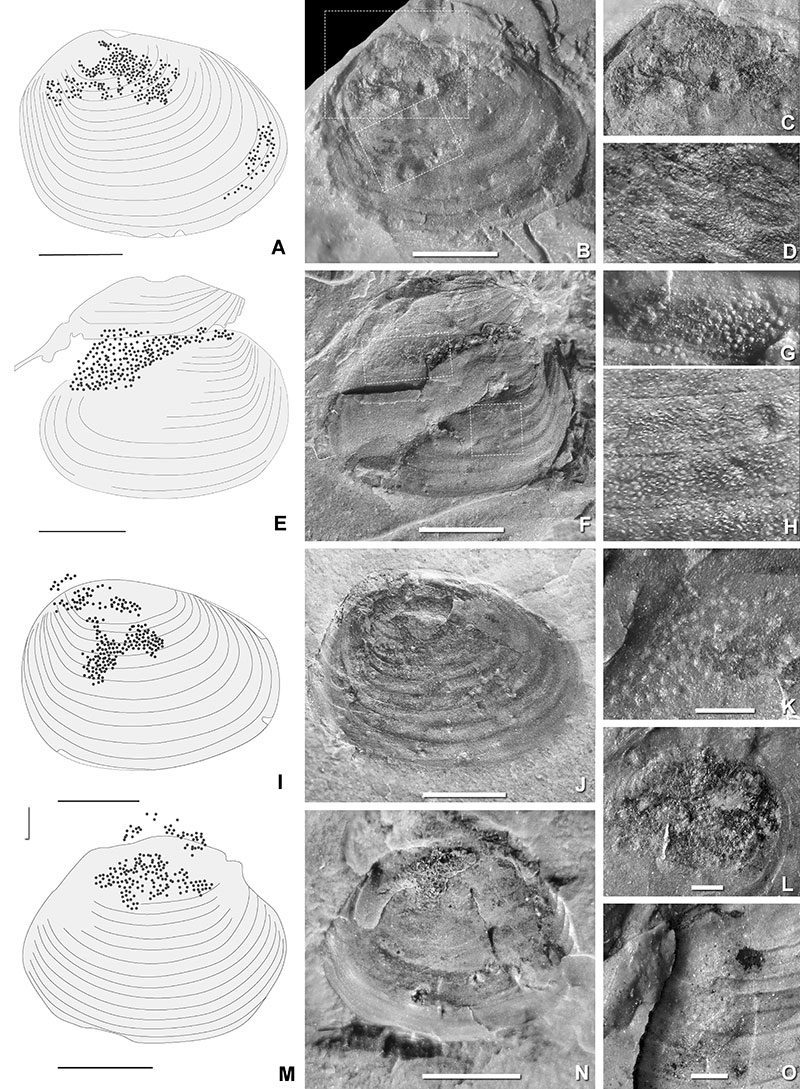FIGURE 1. Triassic stratigraphy of the southern Central European Basin, with its lithostratigraphic subdivision of the Keuper beds, and stratigraphic distribution of spinicaudatan index species in the Keuper beds of the basin. Green colour indicates occurrence of Norestheria franconica n. sp. in the Coburg Sandstone Member, red colour that of Norestheria barnaschi in the Löwenstein Formation.

FIGURE 2. Palaeogeographic situation in the southern Germanic Basin (transferred to the present-day geographic situation) during the late Carnian and early Norian. A siliciclastic marginal facies belt (buff) was derived from detritus of the Vindelician High in the Southeast, with the Hassberge Formation characterised as the fluvially dominated mid to distal part of this belt, creating the comparatively well-washed tongues of the Coburg Sandstone member in northern Franconia. Funkenloch strata shown in green, Weser Formation with its typical playa facies in apricot. Study area marked by black ellipse. Modified from Nitsch (2005) and Geyer and Kelber (2018).

FIGURE 3. Coburg Sandstone member of the Hassberge Formation in the sample localities An der Finkenleite Quarry near Hermannsberg (A) and Hahn Quarry southeast of Eltmann (B). Numbers refer to the stratal units of Freyberg (1965). Inserts sketch plan view of the quarry with situation shown in the photo marked by arrow.
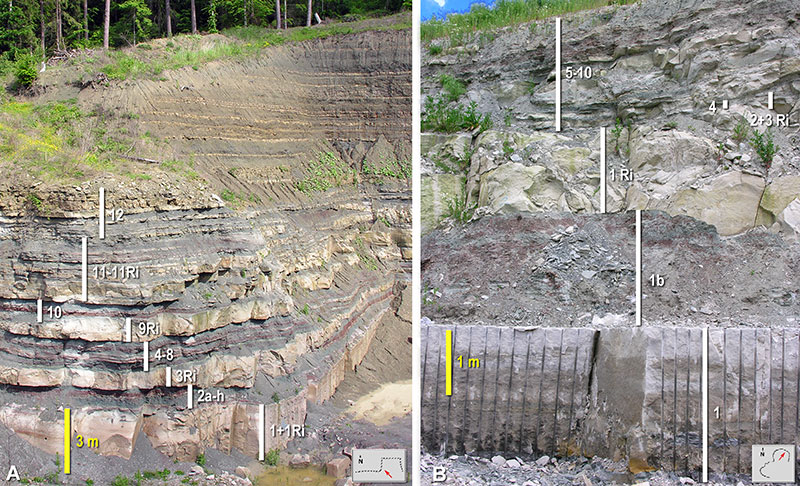
FIGURE 4. Sketch map showing the northwestern Steigerwald and southwestern Hassberge ranges with the major quarry areas of the Coburg Sandstone member of Zeil-Ziegelanger and Eltmann-Ebelsbach. Localities of the spinicaudatans described in this study: 1 Roßberg North Quarry/Ankenbrand Quarry; 2 Roßberg South Quarry/Ankenbrand Quarry; 3 Quarry near Schönbachsmühle; 4 Quarry An der Finkenleite near Hermannsberg; 5 Hahn Quarry southeast of Eltmann. Detailed information in the text.
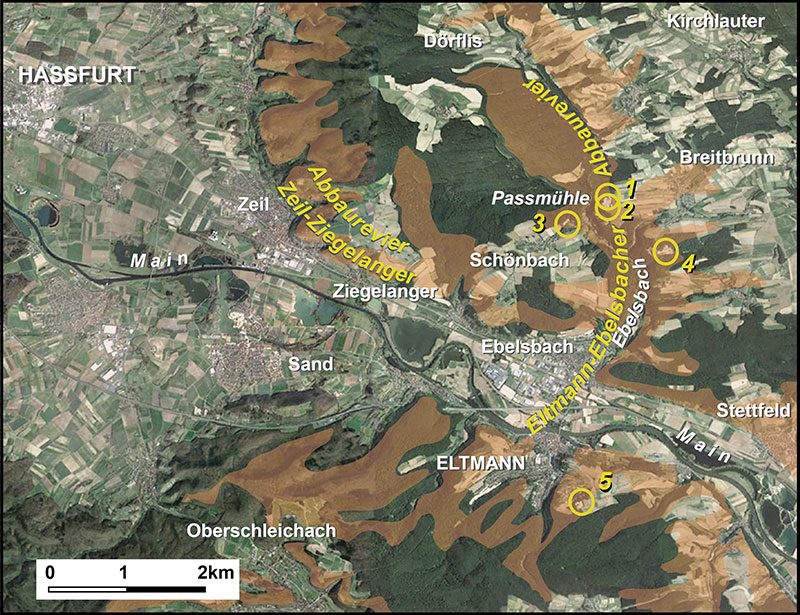
FIGURE 5. Norestheria franconica n. sp. A-C SMTE 6030-1-254, paratype, sketch (A), view of entire specimen (B) and magnified view illustrating morphology of growth lines and surface ornament of growth bands (C); D-F SMTE 6030-1-390, paratype, sketch (D), view of entire specimen (E) and magnified view illustrating morphology of growth lines and surface ornament of growth bands (F); G-I SMTE 6030-1-626, paratype, sketch (G), view of entire specimen (H) and magnified view illustrating morphology of growth lines and surface ornament of growth bands (I);. All specimens from Hahn quarry near Eltmann, stratal unit 5 of the Coburg Sandstone member, Hassberge Formation (see Figure 2B). All scale bars (in A, D, G) 1 mm.
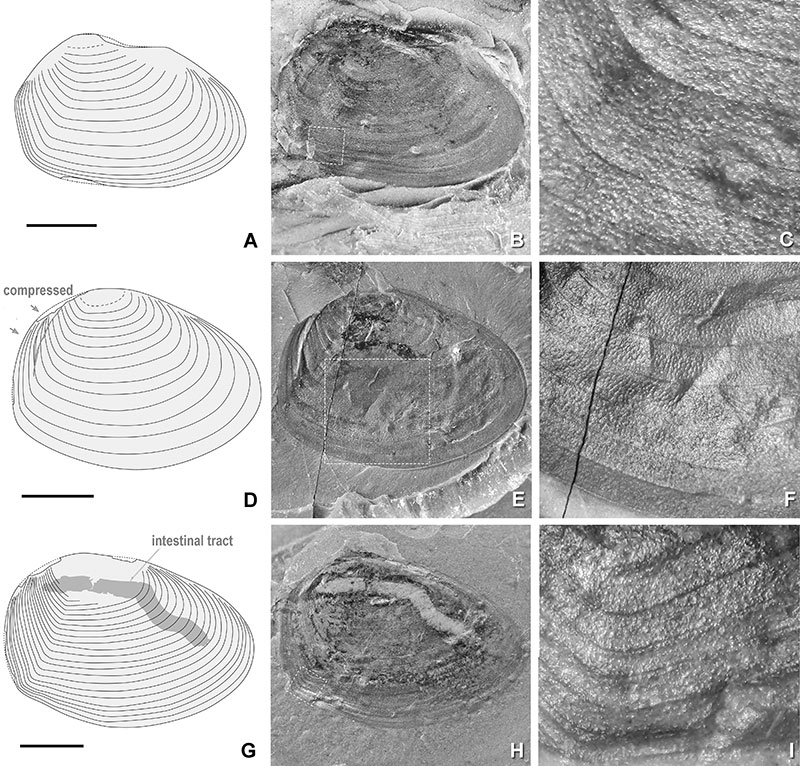
FIGURE 6. Norestheria franconica n. sp. A SMTE 5930-1-198, paratype, carapace with differential plastic deformation caused by compaction. B, C SMTE 5930-4-577a, paratype, entire specimen, partly exfoliated and with impressions of quartz grains (B) and magnified view of anteroventral corner illustration rapid bend of margin and reticulate ornament of growth bands (C); D SMTE 5930-4-576, paratype, detail of anteroventral margin and ornament of growth bands; E, F SMTE 5930-4-673, paratype, slightly compressed carapace, view of entire specimen (E) and magnified view of growth bands with reticulate ornament (F); G SMTE 6030-1-626a, paratype, detail of anteroventral margin; H, I SMTE 6030-1-500, paratype, entire specimen (H) and magnified view of growth bands (I); J SMTE 6030-1-626a, paratype, detail of anteroventral margin; K, L SMTE 6030-1-496Ia, paratype, bivalved specimen, view of entire specimen (K) and detail of anterolateral parts with growth lines of left and right valves impressed onto the visible surface (arrows; L). Specimens with prefix 6030-1- from Hahn quarry near Eltmann, stratal unit 5 of the Coburg Sandstone member, Hassberge Formation, specimens with prefix 5930-1- from quarry near Schönbachsmühle, stratal unit 10, specimens with prefix 5930-4 from Finkenleite quarry near Breitbrunn-Hermannsberg, stratal unit 2. Scale bars equal 1 mm in A, B, E, F, H, J and L, 500 μm in C, G, I, and L, 250 μm in D.
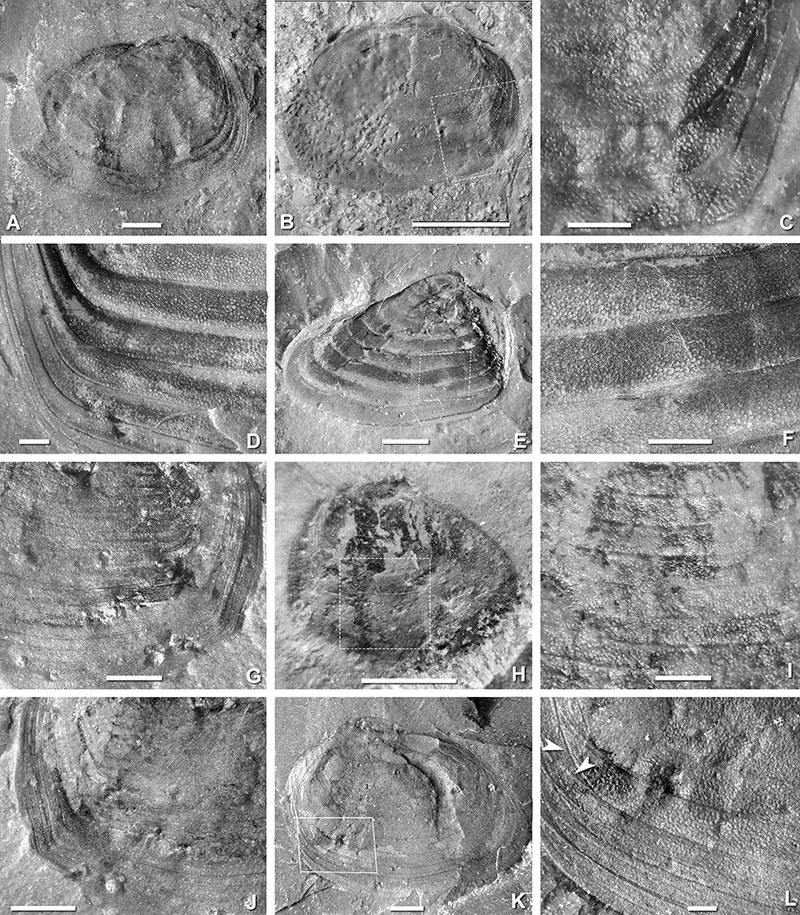
FIGURE 7. Norestheria franconica n. sp., specimens with clusters of resting eggs. A-D SMTE 6030-1-623, paratype, sketch with indication of cyst cluster positions (A), view of entire specimen (B) and magnified views of umbonal region with cysts (C) and growth bands (D); E-H SMTE 6030-1-255, paratype, sketch with indication of cyst cluster (E), view of entire specimen (F) and magnified views of cyst accumulation (G) and growth bands with reticulate ornament (H); I, J SMTE 6030-1-218, paratype, sketch with indication of cyst cluster (I), view of entire specimen (J); K SMTE 6030-1-255, paratype, detail showing cysts; L SMTE 6030-1-625, paratype, cyst cluster below umbonal region; M, N SMTE 6030-1-210, paratype, sketch with indication of cyst positions (M), view of entire specimen (N); O SMTE 5930-1-199IIb, paratype, detail of exfoliate carapace showing accumulation of resting eggs. All specimens with prefix 6030-1- from Hahn quarry near Eltmann, stratal unit 5 of the Coburg Sandstone member, Hassberge Formation, specimens in O from quarry near Schönbachsmühle. Scale bars equal 1 mm in A, B, E, F, I, J, M and N, 500 μm in K, L, O.
